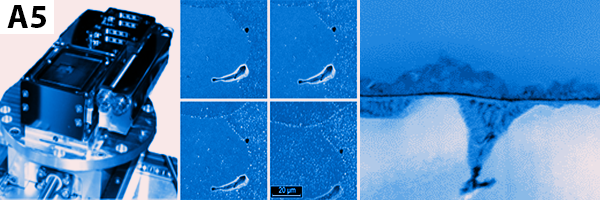A5: Degradation and corrosion of metalic nanostructures and nanostructured metals

Degradation and corrosion of metalic nanostructures and nanostructured metals
Nanostructures and nanostructured materials show promising functional and mechanical properties. Due to their high surface and interfacial energy, however, they can also show significantly increased reactivity in different environments. This increased reactivity can lead to degradation of the properties due to reactions in the gas phase (e.g., sulfidation) or in liquids (aqueous corrosion). In the case of metallic nanostructures (e.g. nanowires or nanoparticles), a very low conversion rate is enough to completely destroy the functionality. For a later use of nanoscale materials, it is therefore essential to know the influence of size effects on the reactivity and the microscopic mechanism of degradation.
Members
Mark Bruns, M. Sc.
Chair of Surface Science and Corrosion
- Email: mark.bruns@fau.de
Supervisor
Prof. Dr. Sannakaisa Virtanen
Chair of Surface Science and Corrosion
- Email: sannakaisa.virtanen@fau.de


